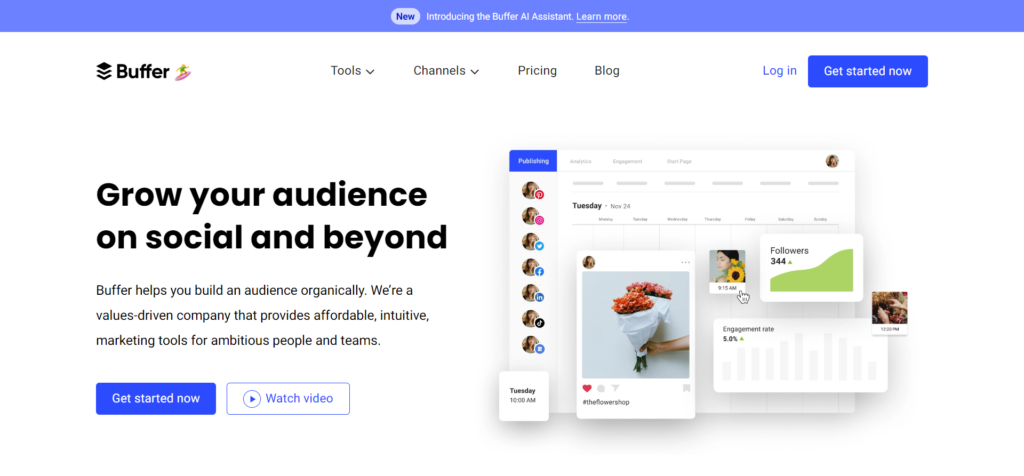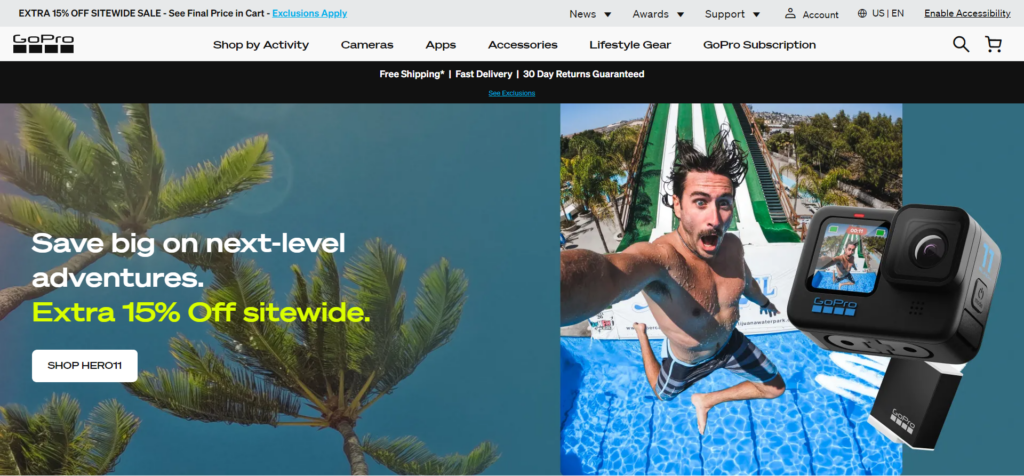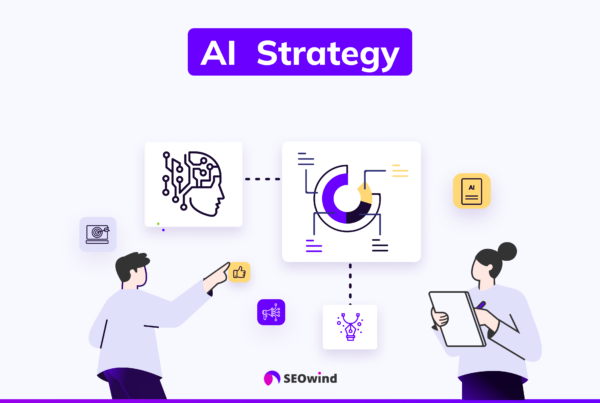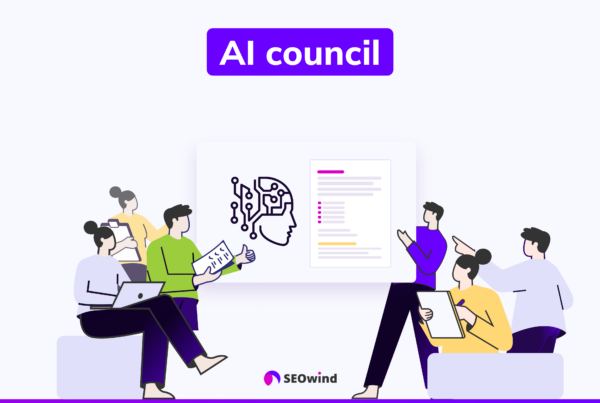Are you looking to create a content strategy that drives results? You’ve come to the right place! Mastering content strategy creation is crucial for businesses and marketers alike.
In this comprehensive guide, we will walk through essential steps for developing an effective content strategy, dive into various types of content, discuss helpful tools and best practices, and explore real-life examples. Whether you are a seasoned professional or just starting in digital marketing, this step-by-step guide will equip you with everything you need to know about mastering content strategy.
What is Content Strategy?
Content strategy refers to planning, developing, managing, and optimizing all aspects of creating, distributing, and maintaining content across multiple platforms. It seeks to attract target audience members by providing engaging, valuable, and relevant information which effectively addresses their needs or solves their problems. The ultimate goal of any well-crafted content strategy is driving business growth — be it sales, leads, or brand awareness.
A successful content strategy involves:
- Clearly defining your goals
- Researching your target audience’s preferences
- Analyzing competitors’ strategies
- Brainstorming ideas and organizing them in a content calendar
- Developing high-quality pieces that align with your objectives.
- Publishing and strategically promoting your creations
- Continuously measuring the effectiveness
In addition to these foundational steps, understanding how various types of content (blog posts, ebooks, case studies, etc.) impact your business goals plays a significant role in tailoring a powerful approach.
As you craft a winning content plan, remember — businesses with clear strategic direction typically outperform others in their market landscape without one, making it worth investing time to comprehend how to build an exceptional plan today!
Benefits of a Successful Content Strategy

A well-crafted content strategy offers numerous advantages for businesses and individuals alike. Implementing a thoughtful, data-driven approach to content creation and distribution can lead to significant long-term benefits. This section will discuss several critical advantages of creating a content strategy, highlighting how it can improve your brand, attract target audiences, and drive sales.
Enhanced Brand Identity
A cohesive content strategy can significantly increase organic traffic, boost brand awareness and impact how customers or clients perceive your brand. By consistently producing high-quality content that adheres to the identity you want to portray in all aspects-from tone, style, messaging-you effectively strengthen your brand identity. This leads to increased trustworthiness and authority in your respective industry.
Increased Customer Engagement
Content strategies facilitate valuable interaction with your audience on multiple platforms through various media types. Customizing the material you share according to unique interests encourages participation in conversations surrounding your brand. Consequently, increased engagement establishes stronger relationships with consumers, bolstering customer loyalty.
Greater Organic Search Visibility
Optimizing for search engines like Google or Bing is an integral part of any content strategy. Creating keyword-rich content that aligns with SEO best practices improves organic search rankings while driving more visibility to your website (or blog) from potential customers searching for relevant information.
Higher Conversion Rates
Crafting compelling copy that persuades readers to take action – be it purchasing products or services – is essential for generating sales or leads in offline/online ventures alike. A strategic approach empowers you with insights into what resonates most among viewers so that desired conversion rates are realistically achievable over time.
Effective Resource Utilization
Developing a clear-cut plan helps allocate resources efficiently by prioritizing tasks based upon their significance within the said blueprint, such as conducting market research, production promotion measuring results, etcetera which prevents possible loss opportunities arising from misdirection haphazard efforts. Team members remained informed, enhancing productivity and quality throughout project phases and ensuring higher ROI.
Content Strategy Process

The process of developing a complete content marketing strategy involves several crucial steps. By following these steps, you can ensure that your content marketing efforts are well-planned and effective in achieving your business objective and desired outcomes.
Note: when drafting your first strategy it might be useful to use a content strategy template. For more information visit: Guide To Perfect Content Strategy Template
Step 1: Define Your Goals
Before diving into creating content, defining the goals you want to achieve through your content strategy is essential. Goals include increasing brand awareness, generating leads, boosting customer retention, or driving sales. Clear objectives will help guide your efforts and provide a framework for evaluating your progress later. Furthermore, establishing specific, measurable, achievable, relevant, and time-bound (SMART) goals can make it easier to track your success over time.
Step 2: Research Your Target Audience
Understanding who you’re trying to reach is critical to any sound content strategy. Conducting audience research can provide valuable insights into the following:
- Demographics: age, gender, location
- Interests: hobbies, preferences
- Concerns and pain points: issues they face that your product or service could solve
You can gather this information through surveys, interviews with existing customers, or online tools like Google Analytics demographics data. Developing personas based on this research helps tailor your content more effectively to resonate with different audience segments.
Step 3: Analyze Your Competitors
A comprehensive competitor analysis enables you to identify opportunities for standing out within busy marketplaces by revealing the following:
- Types of content competitors produce
- Frequency of their updates
- Channels they utilize for distribution
This examination should also highlight gaps in coverage or areas with the potential to surpass their offerings – whether via quality improvements or original topic exploration.
Step 4: Brainstorm Ideas and Create a Content Calendar
Once you have enough background information about both audience expectations and industry competition levels gathered together:
- Start brainstorming content ideas for engaging topics aligned with objectives outlined earlier
- Classify potential pieces based on type (e.g., blog posts, videos)
- Develop a content calendar specifying due dates, ensuring publishing consistency
Remember to solicit input from content team members during the ideation phase and ensure customers’ needs remain central throughout this process.
Step 5: Develop Your Content
Developing your content should reflect best practices for each format involved while also adhering to search engine optimization (SEO) guidelines as applicable. Consider working with skilled writers, designers, or video producers who possess domain-specific knowledge plus relevant background expertise to maintain high levels of quality across deliverables.
Step 6: Publish Content & Distribute Content
Publishing is just the beginning – crafting an effective distribution plan is equally essential when promoting published material through various channels like email newsletters, social media platforms, or paid ads where relevant. Tailor strategies according to audience preferences based on research conducted earlier in this guide streamlines approaches by targeting only those most likely receptive towards such messaging efforts.
Step 7: Measure Results
Monitoring progress against previously-defined goals will substantially contribute toward understanding how well specific campaigns perform relative to pre-established benchmarks – allowing you additional insights and actionable feedback that directly feeds ongoing refinement processes, ultimately resulting in meaningful performance upticks over periods aligned alongside strategy objectives themselves.
Types of Content for a Content Strategy
Developing a content strategy involves selecting the most effective types of content to reach and engage your target audience. A diverse mix of written content with audio and visual formats can help you cater to different preferences, stages in the buyer’s journey, and distribution channels.
Blog Posts
Blog posts are the most common and versatile type of content used in marketing strategies. They allow you to share information, insights, or opinions on various topics related to your business or industry. By consistently publishing valuable blog posts, you can:
- Establish credibility and thought leadership
- Improve search engine ranking through SEO (Search Engine Optimization) techniques
- Drive traffic to your website
- Nurture leads and convert them into customers
Some popular blog post formats include listicles, how-to guides, expert interviews, opinion pieces, case studies, and news updates.
Ebooks
Ebooks provide an excellent opportunity to dive deeper into specific topics and offer valuable information beyond what you might cover in a single blog post. Because they are typically longer-form and high-quality pieces of gated content, ebooks can help generate leads by encouraging readers to provide their contact details in exchange for access. Ebooks are ideal for showing off your expertise on complex subjects and demonstrating your commitment to educating your audience.
Case Studies
Case studies showcase how your products or services have successfully solved real-world problems experienced by actual clients or customers. Case studies can build trust among potential customers. They highlight specific examples with compelling results, testimonials, or data points. When creating case studies as part of your content strategy:
- Focus on customer challenges resolved using your product/service
- Highlight quantifiable results
- Include testimonies from satisfied clients for social proof
Templates
Providing free, practical tools in templates or checklists can add value for your audience while demonstrating your commitment to helping them achieve their goals. Examples include editorial calendars, social media planning templates, and email marketing templates. These resources make it easy for your audience to take action and remember your brand as a helpful partner.
Infographics
Infographics are an eye-catching way to visually present complex data or information, making it easier to digest and understand. Incorporating infographics into your content strategy allows you to:
- Attract attention with engaging visuals
- Break down complex ideas into a more accessible format
- Increase the shareability of content on social platforms
When designing infographics, prioritize clarity, simplicity, and visual appeal.
Videos
Video content is powerful because it combines audiovisual elements that can convey emotions, tell stories and demonstrate features far more effectively than text alone. Some popular types of video content include:
- Explainer videos (how-to’s or tutorials)
- Product demos or reviews
- Behind-the-scenes footage
- Vlogs from company leaders or influencers
- Webinars
You can share videos across multiple channels, such as YouTube, social media networks, websites, and email campaigns.
Social Media
Social media offers numerous platforms where companies can showcase their personality, engage directly with their audiences and share valuable insights through creative content formats like images, memes, GIFs, polls, and live streams. Tapping into platforms such as Facebook, Twitter, Instagram, LinkedIn, and Pinterest allows you to connect with
Content Marketing Tools
Content marketing tools are essential for efficiently developing, managing, and optimizing a successful content strategy. From brainstorming ideas to analyzing results, these tools can help streamline the entire process and make it more effective. In this section, I’ll introduce some of the top content marketing tools that cater to various aspects, such as idea generation, collaboration, publishing, analytics, and optimization.
Idea Generation and Research
- BuzzSumo: BuzzSumo helps with content research by identifying popular topics and trending articles within your niche. It provides insights into what type of content resonates most with your target audience.
- Google Trends: Google Trends lets you discover trends based on Google search queries while providing valuable keyword-related data for better creativity.
- SEOwind: SEOwind enables you to do the SERP analysis to provide you with everything you need to create content that ranks from keyword and content research to writing long-form articles.

Collaboration and Project Management
- Trello: Trello is a visual project management platform that simplifies team collaboration when creating content. Its intuitive interface allows you to manage tasks by assigning due dates and tracking progress easily.
- Slack: Slack enhances team communication through instant messaging integrated with other tools such as Google Drive or Trello.
Content Creation and Publishing
- WordPress: WordPress offers an open-source platform for building professional websites and blogs with many customization options.
- Grammarly: As a writing assistant, Grammarly helps improve grammar and style in your content while ensuring readability.
Analytics and Optimization
- Google Analytics: This powerful analytical tool enables you to track crucial metrics that determine the effectiveness of your content strategy—for instance: website traffic sources, page views, bounce rates, and average time spent on site.
- SEMRush or Ahrefs: Both platforms serve as comprehensive SEO solutions; they aid in keyword research efforts alongside competitor analysis—all factors contributing towards optimized web presence.
By leveraging these specialized tools in tandem with customizing features according to specific requirements, you’re well on your way to crafting a cohesive content strategy. These tools help manage and organize your process and play a crucial role in keeping track of your audience, measuring engagement, and constant optimization based on collected data.
Content Marketing Strategy Best Practices
Knowing the best practices that characterize successful content marketing efforts is crucial to develop a content management strategy that effectively engages your audience and drives results. In this section, I will outline several critical components to enhance your content creation process and yield better outcomes for your business.
Best Practise #1: Align with Your Business Objectives
When developing a content strategy, always align it with your overall business objectives. This alignment enables you to create relevant and targeted content that supports your organizational goals, such as boosting sales or raising brand awareness.
Best Practise #2: Focus on Quality over Quantity
Producing high-quality, valuable content should be prioritized over generating mediocre material. Engaging, informative content is more likely to resonate with your audience, encouraging them to share it or take action based on their learning.
Some ways to ensure quality include:
- Using well-researched information from credible sources
- Creating original, thought-provoking insights
- Ensuring readability through proper grammar and formatting
Best Practise #3: Adopt a Consistent Voice and Tone
Maintaining consistency in brand voice and tone helps solidify your brand identity in readers’ minds, building trust and credibility over time. Establish a clear set of guidelines defining your desired brand voice (e.g., expert yet approachable) and stick to it across all forms of content.
Best Practise #4: Optimize for SEO
Optimizing your content for search engine optimization (SEO) helps attract organic traffic but also aids users in quickly finding what they’re looking for when visiting your site. Implementing best practices like using relevant keywords naturally within the text or optimizing search terms and meta tags can significantly improve visibility on search engine results pages.
Best Practise #5: Target Different Stages of the Buyer’s Journey
Understanding where readers are in the buyer’s journey allows you to produce tailored content addressing their unique concerns and needs at each stage. Creating diverse content types targeting different stages will enable you to guide potential customers through decision-making effectively.
Consider these stages when producing content:
- Awareness: Top-of-the-funnel informative blog posts, infographics, or videos that provide solutions to common pain points
- Consideration: Middle-of-the-funnel assets like ebooks or case studies that delve into more in-depth topics and showcase your unique value proposition
- Decision: Bottom-of-the-funnel materials such as product comparisons or customer testimonials to support prospects in making informed purchasing decisions
Best Practise #6: Regularly Evaluate and Adjust Your Strategy
Your content strategy should not remain static; it must continuously adapt based on data-driven insights. Monitor key performance indicators (KPIs), produce content, gather feedback from your audience, and analyze competitors’ strategies to identify areas where adjustments may improve your results.
By incorporating these best practices into your content strategy development process, you’ll be better equipped to create engaging, share-worthy materials that drive business outcomes and strengthen relationships with your audience.
Successful Content Marketing Strategy Examples
It is essential to understand how successful brands implement their content strategies to derive inspiration and insights for your business. Examining real-life content strategy examples can shed light on various techniques that worked, contributing factors behind their success, and possible challenges faced during implementation. Below are some notable examples of companies effectively utilizing content strategies.
Example 1: HubSpot – Multi-Format Educational Content

HubSpot is a renowned inbound marketing software company with an impressive content strategy. Their approach educates readers through diverse content formats, such as blog posts, ebooks, templates, and webinars. They offer valuable information in multiple formats and cater to learning styles and preferences.
Key aspects of Hubspot’s success:
- Consistently producing high-quality content
- Covering industry-related topics extensively
- Offering free resources to build trust with the audience
- Maintaining a strong brand identity across all formats
Example 2: Buffer – Transparent Company Updates

Buffer’s content strategy predominantly features transparency by honestly sharing their successes and failures in blog posts along with lessons learned from operating a social media management platform. This unique approach has resonated well with their target audience.
Key aspects of Buffer’s success:
- Elevating themselves as thought leaders within the industry
- Authenticity in discussing struggles faced by startups
- A consistent stream of informative updates related to the social media landscape
Example 3: Coca-Cola – Focusing on Storytelling

Coca-Cola’s content strategy revolves around emotional storytelling that unites people irrespective of culture or location while seamlessly integrating brand elements without overtly focusing on product promotion. ‘The Happiness Campaign’ is a perfect example in which Coca-Cola connected users worldwide using interactive digital experiences.
Key aspects of Coca-Cola’s success:
- Emotional storytelling that touches on universal human values
- Utilizing user-generated content effectively
- Creating engaging multimedia experiences for audiences
Example 4: GoPro – Harnessing User-Generated Content

As an action camera manufacturer, GoPro capitalizes on user-generated content to showcase the full potential of its products. By leveraging compelling visuals captured by customers, they provide relatable and authentic examples of what their cameras can do in various settings.
Key aspects of GoPro’s success:
- Prudent use of hashtags like #GoPro for easy submission and categorization
- Showcasing customer captures extensively across social media platforms
- Encouraging brand loyalty through curated content
Using these examples as inspiration, try to recognize the core elements that could benefit your content strategy. Please take note of their strengths and how they’ve stood out within their respective industries. You can also build a successful content strategy with persistence, experimentation, and consistently following best practices.
Content Strategy Mistakes to Avoid

A solid content strategy is essential for businesses and individuals seeking growth and success. However, it’s important to be aware of common mistakes that can hinder your progress. This section will discuss some significant pitfalls to avoid when developing a content strategy.
Mistake 1: Insufficient Research and Planning
Skipping thorough research or inadequate planning can lead to an ineffective content strategy. To develop a robust content plan, take the time required to understand your audience’s needs, preferences, and online behaviors before creating any content. Additionally, stay up-to-date on industry trends and identify gaps in existing materials.
Mistake 2: Lack of clear goals
Without adequately defining goals for your content strategy, you risk investing time, money, and resources into something that might not drive desired results. Ensure you set clear objectives that align with your overall business objectives while being attainable and measurable.
Mistake 3: Creating Low-Quality Content
Publishing low-quality or generic content might give short-term benefits but will hurt your credibility in the long run. Focus on delivering high-quality material that adds value to your audience’s lives by:
- Addressing their pain points
- Providing unique insights
- Engaging them with interactive formats
- Offering practical solutions
Mistake 4: Ignoring SEO Best Practices
Neglecting search engine optimization (SEO) will severely limit your content visibility; continually optimize each piece of material, targeting relevant keywords within your niche market. It also focuses on technical aspects like mobile responsiveness, page load speed, and internal linking.
Mistake 5: Inconsistent Publishing Schedule
An irregular publishing schedule makes it difficult for audiences to rely on you as a trusted source of information; paying attention to consistency helps retain existing followers and attract new ones over time. Developing an editorial calendar aids in maintaining regularity in posting.
Mistake 6: Neglecting Content Distribution Channels
Focusing solely on content production without planning distribution is an often overlooked mistake. It’s essential to:
- Promote your content on appropriate channels
- Leverage email marketing, social media platforms, and influencer collaborations
- Encourage audience participation by regularly engaging with them
Mistake 7: Not Measuring Results
Finally, inadequate monitoring of the results may lead to an inability to fine-tune or pivot your strategy when needed. Analyze essential metrics such as website traffic, social shares, comments, downloads, and conversation rates to ensure your content marketing strategy aligns with your objectives.
Avoiding these common mistakes will set a solid foundation for developing an effective content strategy that drives desired outcomes while catering to your target audience’s needs.
Developing a Content Marketing Plan
A well-crafted content marketing plan is integral for shaping your overall content strategy, ensuring you meet your objectives and target the right audience. Let’s go through each step of developing a content marketing plan to help you build a strong foundation for your strategy.
Align Your Objectives with Business Goals
Defining your content marketing objectives in alignment with your business goals is imperative. Through clear communication between teams internally, having long-term and short-term objectives will make tracking progress more manageable. These targets range from growing brand awareness to increasing sales leads or improving customer engagement.
Determine Key Performance Indicators (KPIs)
Next, you’ll need to identify essential KPIs per the various stages of a customer journey like top-funnel metrics – impressions, click-through rates; middle-funnel metrics – time spent on-site, bounce rate; bottom-funnel metrics – conversion rate(visitors which turned into customers). These KPIs enable monitoring and measurement of the success of your content marketing endeavors against predetermined benchmarks.
Develop Audience Personas
To create targeted and meaningful content, you must understand who exactly you’re making it for. Create detailed audience personas by collecting demographic information such as age range, gender, location, education level, and income range, along with buying behavior patterns such as pain points/issues they might be facing motivating them to find solutions.
- Conduct market research
- Gather existing customer data
- Use Google Analytics insights
- Engage in social media listening
Choose Suitable Content Formats and Channels
After developing audience personas, pick suitable forms of content like articles/blog posts(90% informative/educational) and multimedia (10% promotion/self-congratulatory) that resonate best with each segment, depending on their preferences/tastes/tendencies. Apart from the website, aim to disperse it across multiple channels – social media, email marketing, and other platforms where your target audience will most likely engage with you.
Create a Compelling Content Strategy
To develop a content strategy that stands out:
- Focus on producing high-quality and value-packed materials
- Address concerns/questions/problems directly
- Establish thought leadership in your field through expert insight/analysis/opinion/forecast
Allocate & Manage Resources
Having defined roles and responsibilities for team members will lead to more efficient management of content resources. Determine staff requirements, invest in training and education needed for skill development, and assign tasks based on strengths/expertise rather than preset job titles with corresponding deadlines.
Implement an Editorial Calendar
An editorial calendar is essential for keeping track of set goals and providing visibility/scheduling capabilities deemed necessary for long-term planning – yearly/quarterly. Key elements include topic/title, format/channel/distribution details, and due dates.
Content Optimization Strategies
Content optimization is a crucial component in developing a good content strategy. Optimizing your content can enhance its visibility, improve user engagement, and increase the likelihood of achieving your marketing goals.
- Utilize Relevant Keywords
It’s essential to use relevant keywords throughout the piece. These keywords should seamlessly integrate into the text while maintaining a natural flow. You can identify appropriate keywords by:
- Performing thorough keyword research
- Analyzing competitors’ content
- Discovering common terms that resonate with your audience
- Focus on Readability
High readability scores are crucial for successful content, contributing to positive user experience and retaining readers’ attention. To achieve high readability:
- Break up large blocks of text with shorter paragraphs and subheadings
- Use bullet points or numbered lists to describe processes or elaborate concepts
- Keep sentences concise (a maximum of 15 words) and avoid complex vocabulary whenever possible
- Implement On-page SEO Techniques
Optimizing key elements such as meta tags, headers, and URL structures helps search engines understand your content better. This understanding leads to higher search engine rankings which consequently boosts organic traffic. Some on-page SEO techniques include:
- Crafting unique title tags for each page
- Writing engaging meta descriptions that incorporate relevant keywords
- Structuring URLs using descriptive words instead of alphanumeric characters or parameters
- Incorporate Visuals and Multimedia Elements
Using visuals such as images, infographics, videos, and other multimedia components can significantly elevate your content’s impact on audiences by providing additional context and fostering greater understanding.
Visual elements also help break up textual monotony while making the overall presentation more appealing to readers.
When incorporating visual materials like images:
- Give each image an accurate and descriptive filename
- Include a relevant alt tag for search engines to index properly
- Optimize Content for Mobile Devices
Mobile users have skyrocketed in recent years, making it a priority for content teams to optimize their work for such devices. To achieve this:
- Utilize responsive web design to ensure your content automatically adapts to different screen sizes
- Keep navigation simple and accessible by minimizing the number of elements on the page
- Test your mobile site performance with tools like Google’s Mobile-Friendly Test
Implementing these content optimization strategies within your comprehensive content marketing plan will increase the likelihood of retaining readership, improving organic visibility, and achieving success in realizing your marketing goals.
Creating an Editorial Calendar

An editorial calendar is a crucial component of good content strategy. It helps you plan, schedule and manage your content production and distribution efforts more efficiently. By developing an editorial calendar, you’ll be able to maintain consistency across different platforms and ensure that your audience stays engaged with your brand. In this section, let’s explore creating an effective editorial calendar.
Establish Your Content Objectives and Themes
Before designing an editorial calendar, it’s essential to establish your content objectives and key themes you’d like to cover during a specific time frame. Identifying your goals will enable you to align them with business priorities while keeping your audience engaged with relevant content. Start by:
- Defining the primary purpose of each piece of content – generating leads, boosting brand awareness, or increasing social media engagement.
- Identifying unique themes based on industry trends, seasonal events, or important dates relevant to your niche.
Determine Your Publishing Schedule
Once you have established your content objectives and themes, determine how often you should publish new content on various channels such as blogs, social media platforms, and email newsletters. A few factors to consider when deciding on a publishing schedule include:
- The resources available for creating high-quality content
- Your target audience’s preferences regarding frequency
- Seasonal fluctuations or time-sensitive topics within your industry
Remember that quality always precedes quantity; producing fewer top-notch pieces is better than churning out low-quality ones to maintain volume.
Set Deadlines for Each Stage
Have deadlines for the ideation and research, editing, proofreading, finalizing visuals, and scheduled publication stage. Delineating these stages facilitates the efficient division of labor among team members, opening room for collaboration.
Choose the Right Tools
To make your editorial calendar more manageable, leverage digital tools that aid in automating and streamlining various aspects of content planning and organization. Some popular options include:
- Trello: A project management tool with customizable boards for visually managing editorial calendars.
- Airtable: A flexible, collaborative software that resembles a spreadsheet but packs additional features like single-click publish and access controls.
- Google Sheets or Microsoft Excel: For those who prefer simplicity, spreadsheets remain classic yet powerful tools for designing editorial calendars.
Continuously Review and Adapt
Maintain your content calendar continuously as circumstances, trends, or audience preferences change. Routinely reviewing your strategy exposes areas ripe for adjustment or improvement, ensuring your content remains fresh and relevant.
Content Promotion Strategies
Creation is just one aspect of a successful content strategy framework in content marketing. Equally important is promoting your content to ensure it reaches the right audience at the right time. To build a solid content promotion plan, consider employing various promotional strategies that cater to different platforms and mediums. This section will discuss practical techniques for promoting your content and engaging with your target audience.
Leverage Social Media Channels
Social media remains an indispensable platform for promoting any content. Utilize all relevant channels such as Facebook, Twitter, LinkedIn, Instagram, and Pinterest to share your articles, videos, infographics, or ebooks with your followers:
- Craft compelling captions tailor-made for each platform’s unique features and user behavior
- Make use of hashtags to enhance visibility in search results
- Share multiple times on each platform to maximize reach
- Experiment with paid social media advertising if the budget permits
Collaborate with Influencers
Working closely with industry influencers can significantly amplify the reach of your content. Building relationships with these key players can lead to guest posts on their blogs or mentions in their social media updates:
- Research influencers who align with your brand values and have a strong following within your niche
- Engage in genuine conversations before asking them to promote specific pieces of content
- Offer exclusive access or first dibs on new products or services as an incentive for collaboration
Build a Strong Email Marketing Campaign
An effective way to promote your latest blog post or ebook is via email marketing campaigns sent out to subscribers:
- Segment lists into categories based on user behavior or preferences so you can send targeted promotions accordingly.
- Develop engaging subject lines that recipients would feel compelled to open.
- Use visually appealing email templates featuring images and call-to-action buttons, directing readers toward full-scale versions of promoted content.
Tap into Online Communities, Forums, and Q&A Platforms
Participating in relevant communities on platforms such as Reddit, Quora, Facebook groups, and specialized forums can position your content in front of individuals who are actively seeking information related to your industry:
- Ensure that promotions are shared within the context of genuine conversations; blatant self-promotion is often frowned upon in these communities.
- Respond to questions or comments by providing insightful answers while linking to related articles on your site.
Repurpose Content for Different Channels
Adapting a single piece of written material (a blog post or ebook chapter) into multimedia formats allows you to tap into various demographics with varying preferences:
- Convert articles into short videos or podcasts for those who prefer listening over reading
- Create infographics summarizing key points covered within an article for visual learners
Raising visibility through strategic content promotion increases reach and reaffirms the value you’ve invested in developing high-quality content. Implementing these strategies will optimize your existing content and boost your website’s traffic and customer engagement rates.


